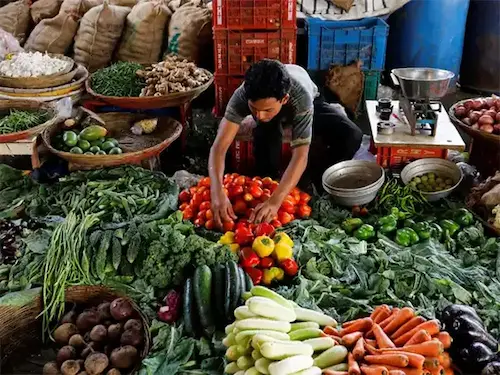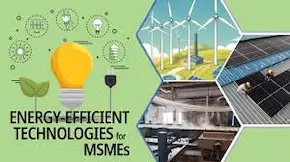1. Why is Corporate Investment Lagging Behind in India? – Economy

Why in News?
India’s industrial output growth slowed to a 9-month low of 1.2%, raising concerns about low corporate investment, despite supportive measures like:
- Corporate tax cuts
- Increased public capital expenditure
- Monetary policy easing (interest rate cuts)
Context and Analysis
Despite favorable macroeconomic policies, private sector investment in India remains sluggish. The current situation brings to light deeper structural and theoretical concerns that explain why corporate India is hesitant to invest.
Key Factors Behind Sluggish Corporate Investment
1. Weak Consumer Demand
- Private investment is demand-driven, and consumer spending is subdued.
- Example: Even after the corporate tax cut from 30% to 22% in 2019, private investment in capital goods (machinery, intellectual property, etc.) rose only 35% over FY20–FY23.
- Households face inflationary pressures and stagnant income growth, limiting their spending capacity.
2. Excess Industrial Capacity
- Many industries are operating at below optimal capacity post-COVID-19.
- Firms are underutilizing factories, reducing the incentive to invest in new capacities or infrastructure.
3. Misreading of the Profit-Investment Link
- There’s a flawed assumption that high corporate profits automatically lead to higher investment.
- According to Michał Kalecki, it’s investment that drives profits, not the other way around.
- Companies are cautious about returns unless there’s visible demand.
4. Theoretical Insights from Marxist Economists
- Rosa Luxemburg: Emphasized that anticipated demand is central to investment decisions in a capitalist economy. Without demand, surplus capital remains idle.
- Mikhail Tugan-Baranovsky: Argued that investment can create its own demand, but his views are contested.
- These perspectives highlight the importance of demand-side economics in addressing investment stagnation.
Implications for Policy
- Public capital expenditure alone is insufficient; it must be complemented by demand stimulation.
- Policies should focus on job creation, rural income support, tax reforms, and social sector spending to boost household consumption.
- Demand revival will provide the confidence businesses need to invest in capacity expansion.
Exam Connect – Possible Questions
Prelims
1. Which of the following statements is/are correct regarding corporate investment trends in India?
1.Corporate tax in India was reduced from 30% to 22% in 2019.
2.High profits always lead to increased corporate investment.
3.Excess capacity leads to increased capital formation.
Choose the correct option:
A. 1 only
B. 1 and 2 only
C. 2 and 3 only
D. All of the above
Answer: A. 1 only
2. Michał Kalecki is known for which of the following economic insights?
A. Profits automatically lead to investment
B. Investment can drive profits
C. Supply creates its own demand
D. Wages are the only determinant of investment
Answer: B. Investment can drive profits
Mains
1. “Despite strong corporate profits, private investment in India has not picked up.” Examine the reasons behind this phenomenon. Also, suggest measures to encourage corporate investment in the economy.
2. Discuss the role of demand in stimulating private investment. Evaluate the relevance of Rosa Luxemburg’s and Michał Kalecki’s theories in the Indian context.
2. Challenges in the Implementation of PLI Schemes – Economy

Why in News?
Out of the 14 Production-Linked Incentive (PLI) schemes launched by the Government of India to boost domestic manufacturing, six sectors — including textiles, solar modules, IT hardware, automobiles, advanced chemical cells (ACC), and specialty steel — are currently experiencing slower-than-expected progress.
What are PLI Schemes?
- Introduced in 2020, the PLI schemes aim to provide financial incentives to companies based on their incremental sales of manufactured goods.
- Objectives:
- Reduce import dependency
- Promote “Make in India”
- Create jobs
- Boost export competitiveness
Key Challenges in PLI Implementation
1. Stringent Eligibility Criteria
- Many small and mid-sized firms fail to meet thresholds (e.g., minimum investment, revenue).
- Especially impacts sectors like textiles and IT hardware, where MSMEs dominate.
2. Delayed Manufacturing Setup
- Sectors like solar modules and advanced chemical cells require 1.5–3 years to establish infrastructure.
- This delays job creation and economic impact.
3. Dependence on Imports
- Several sectors, especially IT hardware and solar manufacturing, still rely heavily on imported components, undermining the goal of self-reliance.
4. Slow Fund Disbursement
- The delay in releasing incentives in the initial years (due to bureaucratic bottlenecks) has discouraged participation.
- Cash-flow-sensitive sectors are particularly affected.
5. Sector-Specific Hurdles
| Sector | Challenges |
|---|---|
| Textiles | Fierce global competition; tight scheme norms |
| Solar Modules | Large capacity gap: 77.2 GW module vs. 7.6 GW cell |
| Automobiles | Market volatility, tech disruptions (EVs) |
| ACC (Batteries) | Long gestation period; high capital investment |
| IT Hardware | Supply chain dependence; limited domestic ecosystem |
Implications for Industrial Policy
- Without supply chain localization, PLI schemes may fail to reduce import dependency.
- Himachal Pradesh, which is trying to attract industries (e.g., electronics, pharma), may also face delays if infrastructure and ecosystem support are lacking.
Way Forward
- Relax Eligibility Norms
- Make schemes more inclusive for MSMEs, especially in textiles and IT.
- Accelerate Fund Disbursal
- Simplify administrative procedures for faster processing.
- Strengthen Supply Chains
- Incentivize development of ancillary industries and raw material production.
- Phase-wise Implementation Reviews
- Regular feedback and course correction to improve scheme efficiency.
- Public-Private Coordination
- Enhance coordination with industry bodies for better scheme design.
Exam Connect – Possible Questions
Prelims
1. Which of the following sectors are currently experiencing slow progress under India’s PLI Scheme implementation?
1. Solar Modules
2. Mobile Manufacturing
3.IT Hardware
4.Automobiles
Choose the correct option:
A. 1, 3, and 4 only
B. 1 and 2 only
C. 2, 3, and 4 only
D. All of the above
Answer: A. 1, 3, and 4 only
2. What is the primary objective of India’s Production-Linked Incentive (PLI) schemes?
A. Increase agricultural output
B. Provide subsidies to public sector units
C. Promote domestic manufacturing and reduce import dependency
D. Privatize key manufacturing sectors
Answer: C. Promote domestic manufacturing and reduce import dependency
Mains
1. “Despite being a flagship industrial policy initiative, the PLI scheme is facing critical implementation challenges.” Examine these challenges and suggest measures to improve the scheme’s effectiveness.
2. Discuss the importance of supply chain development and eligibility flexibility in the success of India’s Production-Linked Incentive schemes. Provide examples from specific sectors.
3. Inflation Hits 77-Month Low – Economy

Why in News?
India’s inflation indicators have shown a sharp decline:
- Consumer Price Index (CPI): Dropped to 2.1% in June 2025 – the lowest in 77 months (since January 2019).
- Wholesale Price Index (WPI): Contracted by -0.13%, marking the first decline in 20 months.
Key Takeaways
| Indicator | June 2025 | June 2024 |
|---|---|---|
| CPI Inflation | 2.1% | 4.9% |
| WPI Inflation | -0.13% | 3.2% |
| Food & Beverages (CPI) | -0.2% (deflation) | 8.4% |
| WPI Food Articles | -3.75% | 11.1% |
| Fuel and Light (CPI) | 2.55% | 4.1% |
| Crude Petroleum & Natural Gas (WPI) | -12.3% | Declining for 10 months |
| Housing (CPI) | 3.24% | Slight increase |
| Pan, Tobacco, Intoxicants (CPI) | Stable at 2.4% | – |
Understanding Inflation Indicators
Consumer Price Index (CPI)
- Measures: Change in retail prices of goods/services consumed by households.
- Compiled by: NSO (National Statistical Office).
- Base year: 2012 (or 2016 for CPI-IW).
- Includes: Both goods and services.
- Importance: Used by RBI for monetary policy decisions (target inflation = 4% ±2%).
Wholesale Price Index (WPI)
- Measures: Price change at the wholesale level.
- Compiled by: Office of Economic Adviser, Ministry of Commerce and Industry.
- Base year: 2011–12.
- Includes: Only goods, not services.
- Importance: Reflects inflationary trends in production and distribution stages.
Factors Behind the Inflation Drop
- Food Price Deflation
- Sharp decline in vegetables, cereals, and oilseeds.
- CPI Food and Beverages: -0.2%
- WPI Food Articles: -3.75%
- Fall in Global Crude Oil Prices
- WPI for Crude Petroleum & Natural Gas: -12.3%
- This also reduced costs for transportation and fuel-linked sectors.
- Moderating Core Inflation
- Stable pricing in housing, services, and manufactured goods.
- Weak Consumer Demand Post-COVID
- Recovery is ongoing; consumption hasn’t fully normalized in rural areas.
Implications for the Economy
Positive Impacts
- Gives RBI space to maintain or reduce interest rates to support growth.
- Reduces cost of living and improves household savings.
- Helps government maintain fiscal discipline (lower subsidy pressure).
Concerns and Cautions
- Deflation risk in food could hurt farmer incomes.
- Low WPI might indicate weak demand at the industrial level.
- Persistently low inflation could signal economic slowdown if not demand-driven.
Exam Connect – Possible Questions
Prelims
1. Which of the following statements about CPI and WPI is/are correct?
1.CPI includes both goods and services, whereas WPI includes only goods.
2.CPI is compiled by the Ministry of Commerce and Industry.
3.WPI has a base year of 2011–12.
Options:
A. 1 and 2 only
B. 2 and 3 only
C. 1 and 3 only
D. All of the above
Answer: C. 1 and 3 only
2. What was the primary reason for the fall in India’s CPI inflation to 2.1% in June 2025?
A. Increase in housing prices
B. Deflation in food and beverages
C. Spike in fuel prices
D. Global shortage of commodities
Answer: B. Deflation in food and beverages
Mains
1. “The recent fall in CPI and WPI inflation indicates a cooling economy but also brings certain risks.” Discuss the causes, implications, and policy responses to India’s current low-inflation scenario.
2. Differentiate between CPI and WPI in terms of coverage, compilation, and policy relevance. Also analyze how these indices influence India’s monetary policy decisions.
4. The India Inequality Debate – Misinterpretation of Gini Index and Data Credibility – Economy
Why in News?
Recent claims, based on the Gini index of consumption, suggest that India is among the most equal societies globally. This has triggered a major debate over:
- The validity of data sources
- The difference between consumption and income inequality
- The need for official income surveys in India
What is the Gini Index?
- Definition: A statistical measure of inequality in distribution — of income, wealth, or consumption.
- Range:
- 0 = perfect equality
- 100 = perfect inequality
- Types of Gini:
- Consumption Gini: Based on household consumption data
- Income Gini: Based on earnings (more sensitive to disparities)
- Wealth Gini: Captures asset distribution, often the most unequal
Key Points of the Controversy
1. Misinterpreted Rankings
- India reportedly has a Consumption Gini of 25.5 (2022–23), ranking it as the 4th most equal society.
- This does not reflect income or wealth inequality, which are much higher.
2. No Official Income Inequality Data
- India does not conduct regular income surveys, limiting credible analysis.
- In the absence of official data, organizations rely on synthetic estimates (e.g., World Inequality Database – WID).
3. Flawed Comparisons
- Comparing India’s consumption Gini with other countries’ income Gini leads to misleading conclusions.
- Consumption is typically more equal than income (as households smooth consumption despite income differences).
4. Political and Media Miscommunication
- Several claims that India is “one of the most equal societies” are based on incomplete data and have been used to support social equality narratives, which is misleading.
5. Data Source Credibility Issues
| Source | Concerns |
|---|---|
| WID (World Inequality Database) | Uses synthetic modelling; lacks transparency |
| World Bank PIP | Reliable but mixes consumption and income indicators |
| Government of India | Lacks updated and regular income inequality surveys |
Implications for Policy and Economy
Why It Matters
- Targeted welfare policies depend on accurate inequality data.
- Taxation reforms (e.g., wealth tax, subsidies) require knowledge of who earns and owns how much.
- Socio-economic planning (education, healthcare access, urban-rural development) hinges on correct assessments of inequality.
Consequences of Misinterpretation
- Misguided policy decisions
- Public misinformation about India’s socio-economic reality
- Erosion of trust in statistical institutions
Need of the Hour
- Regular, Transparent Income Surveys
- Conduct by NSO or NITI Aayog
- Clear Differentiation Between Indicators
- Avoid comparing consumption vs. income vs. wealth Gini
- Strengthen Data Governance
- Improve methodological transparency, review synthetic datasets
- Build Statistical Literacy Among Policymakers and Media
- Prevent oversimplified or politicized data interpretations
Exam Connect – Possible Questions
Prelims
1. The Gini Index measures:
A. Employment elasticity
B. Government expenditure
C. Inequality in distribution
D. Human capital growth
Answer: C. Inequality in distribution
2. Which of the following statements are correct?
1.Gini Index of consumption is always higher than that of income.
2. India lacks regular official data on income inequality.
3.Consumption-based Gini Index may underestimate actual inequality.
Choose the correct option:
A. 2 only
B. 1 and 2 only
C. 2 and 3 only
D. All of the above
Answer: C. 2 and 3 only
Mains
1. “The claim that India is among the most equal societies globally reflects a deeper problem in how inequality is measured.” Critically analyze the challenges in assessing inequality in India.
2. Discuss the importance of accurate and reliable inequality data in designing inclusive economic policies. How can India improve its data architecture to better assess socio-economic disparities?
5. Government Backs New SO₂ Emission Norms – Environment

Why in News?
The Union Environment Ministry has defended the recent revision of Sulphur Dioxide (SO₂) emission norms for coal- and lignite-based thermal power plants, exempting many from mandatory installation of Flue Gas Desulphurization (FGD) systems. The government argues this is based on cost-benefit analysis, emission data, and sustainability considerations.
What is Sulphur Dioxide (SO₂)?
- A toxic gas produced mainly by burning fossil fuels, especially coal in thermal power plants.
- It is a precursor to PM2.5, and contributes to acid rain and air pollution.
India’s SO₂ Emissions: An Overview
| Indicator | Status |
|---|---|
| Global Ranking | 1st (largest SO₂ emitter) |
| Share of Global Emissions | Over 20% |
| Major Sources | Coal-fired thermal plants, refineries, metal smelters |
| Affected Regions | Indo-Gangetic Plain, Central India, Chhattisgarh, Maharashtra, Tamil Nadu |
Revised SO₂ Emission Norms: Key Features
Plant Classification System
| Category | Description | Compliance Deadline |
|---|---|---|
| Category A | Plants near major cities | Must install FGD by 2027 |
| Category B | Plants near critically polluted areas | Case-by-case evaluation |
| Category C | Other plants (majority) | Exempt from FGD, must maintain stack height norms |
Policy Rationale and Cost Considerations
- Cost of retrofitting all plants with FGD: Estimated at ₹2.54 lakh crore
- Government claims no major difference in public health outcomes between cities with or without FGD installations.
- Focus is on cost-effective implementation in high-impact areas.
Health and Environmental Impacts of SO₂
Health Risks
- Respiratory issues: Asthma, bronchitis, lung irritation
- Cardiovascular problems: SO₂ converts into PM2.5, linked to heart attacks, strokes
Environmental Impact
- Acid rain formation → harms soil quality, aquatic life, and vegetation
- Damages monuments and buildings, especially in regions with high rainfall
Comparative Global Standards
| Country | SO₂ Standards vs India |
|---|---|
| Japan | Less stringent |
| Australia | Less stringent |
| China | Recently tightened norms |
| India | Stricter in formal policy, but enforcement gaps exist |
Balancing Environment and Economy
Pros of New Norms
- Saves costs for power producers
- Prioritizes high-pollution areas
- Encourages technology adoption where most needed
Criticism
- Seen as a regulatory rollback
- May delay air quality improvements in vulnerable areas
- Long-term health and environmental costs could outweigh short-term economic savings
Exam Connect – Possible Questions
Prelims
1. Which of the following pollutants is most associated with the formation of acid rain?
A. Carbon Monoxide
B. Methane
C. Sulphur Dioxide
D. Ground-level Ozone
Answer: C. Sulphur Dioxide
2. Which of the following is/are correct regarding Flue Gas Desulphurization (FGD)?
1. It is used to reduce SO₂ emissions from thermal power plants.
2. India has mandated FGD for all coal-based plants, regardless of location.
3. GD helps control both particulate matter and greenhouse gases.
Choose the correct option:
A. 1 only
B. 1 and 3 only
C. 2 and 3 only
D. All of the above
Answer: A. 1 only
Mains
1. “The recent revision of SO₂ emission norms for thermal power plants raises the question of how to balance public health and economic sustainability.” Discuss.
2. Examine the role of SO₂ in air pollution and public health degradation in India. Evaluate the effectiveness of the government’s current approach to SO₂ emission control.
6. ADEETIE Scheme – Boosting Energy Efficiency in Indian MSMEs – Economy

Why in News?
The Union Ministry of Power has launched a new national initiative – ADEETIE (Assistance in Deploying Energy Efficient Technologies in Industries & Establishments) – to promote energy efficiency, particularly targeting India’s Micro, Small, and Medium Enterprises (MSMEs).
What is the ADEETIE Scheme?
| Full Form | Assistance in Deploying Energy Efficient Technologies in Industries & Establishments |
|---|---|
| Launched By | Bureau of Energy Efficiency (BEE), Ministry of Power |
| Target Group | Exclusively for MSMEs (Micro, Small, Medium Enterprises) |
| Budget Allocation | ₹1,000 crore |
| Legal Basis | Aligned with the Energy Conservation (Amendment) Act, 2022 |
| Climate Goal Support | Reduces emission intensity by 45% (by 2030); Net Zero target by 2070 |
Key Features of the ADEETIE Scheme
1. Interest Subsidy Support
- Small Enterprises: 5% interest subsidy
- Medium Enterprises: 3% interest subsidy
For adoption of energy-efficient and clean technologies
2. Digital Portal
- A centralized one-stop digital platform for:
- Financing assistance
- Project planning and development
- Knowledge sharing on clean energy tech
3. Supported Technologies
The scheme promotes:
- Automation & digital control systems (optimize industrial processes)
- Combustion control systems for boilers (reduce fuel usage)
- Methane capture technologies (cut greenhouse gas emissions)
- Air-dyeing in textiles (waterless process, energy-saving)
4. Industry Collaboration
- Promotes MoUs with MSME associations
- Encourages a network-based approach to scale clean energy innovation
Significance of the Scheme
For the Economy:
- Reduces energy costs for MSMEs
- Enhances competitiveness and productivity
- Attracts green financing through carbon credits and markets
For the Environment:
- Contributes to India’s climate goals under the Paris Agreement
- Reduces carbon emissions and promotes sustainable industrial practices
Policy & Legal Framework
- Backed by Energy Conservation (Amendment) Act, 2022:
- Establishes carbon markets
- Mandates use of clean energy in industries
- Complements other schemes like:
- PAT (Perform, Achieve, Trade) scheme
- UJALA and National Mission on Enhanced Energy Efficiency
Exam Connect – Possible Questions
Prelims
1. The ADEETIE scheme, recently launched by the Government of India, is primarily focused on:
A. Skill development in rural areas
B. Digital literacy for women
C. Deployment of energy-efficient technologies in MSMEs
D. Enhancing rural electrification infrastructure
Answer: C. Deployment of energy-efficient technologies in MSMEs
2. Which of the following technologies is not promoted under the ADEETIE scheme?
A. Combustion control for boilers
B. Air-dyeing in textiles
C. Electric vehicle battery manufacturing
D. Methane capture technology
Answer: C. Electric vehicle battery manufacturing
Mains
1. “Schemes like ADEETIE reflect India’s shift towards climate-conscious industrial development.” Discuss the objectives, features, and significance of the ADEETIE scheme in the context of India’s energy transition.
2. Explain how energy efficiency schemes for MSMEs can help India achieve its climate targets while boosting industrial competitiveness. What challenges could arise in implementing such schemes at the grassroots level?

